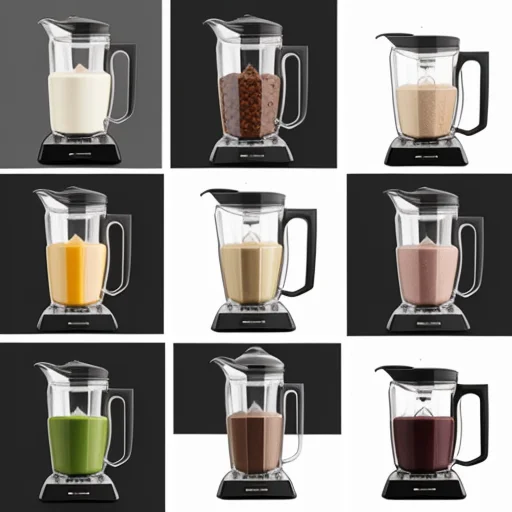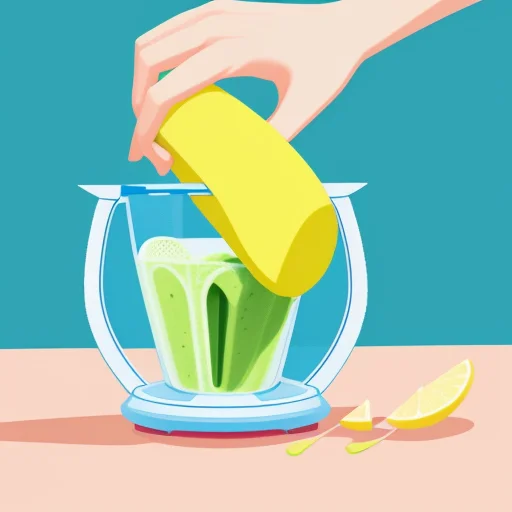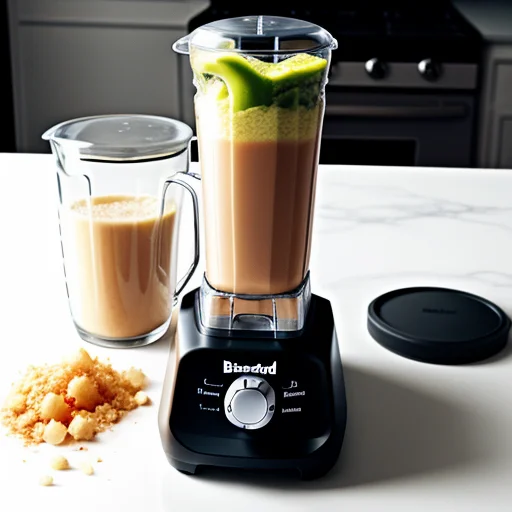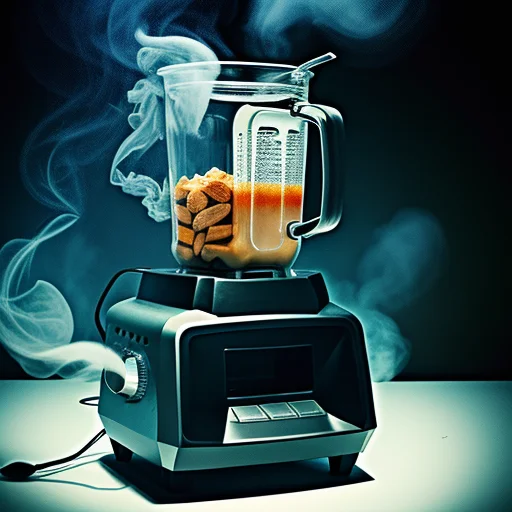As an Amazon Associate I earn from qualifying purchases.
Introduction
If you’re like most people, you use your blender frequently to make smoothies, pureed soups, sauces, and more. But with regular wear and tear, blenders don’t last forever. So how long do blenders last and when can you expect your blender to need replacing?
Blenders can last 6-15 years on average, but their lifespan depends on several factors. Read on for a deep dive into precisely how long blenders last, what impacts their longevity, signs yours may be nearing the end, tips to extend its life, and when to replace it.
A Brief History of Blenders

Before diving into how long blenders last, let’s go over a quick history of when blenders were invented. The first electric blenders were patented in the early 1900s, but the modern blender design we’re familiar with emerged in the 1930s. Learn more about when blenders were invented here.
Some key events in blender history include:
- 1922 – Stephen Poplawski patents the first electric blender.
- 1922 – Fred Osius improves the blender design with a mixing rod to circulate ingredients.
- 1930s – Fred Waring introduces the Waring Blender, the first modern counter-top blender.
- 1946 – Vitamix founders William Barnard and Lou Cochran create the first commercial blender for restaurants.
- 1970s – Affordable blenders gain popularity in home kitchens.
Blenders have continued improving with more power, settings, and safety features while retaining the same basic container and blade design.
How Long Do Blenders Last?
The average lifespan of a blender is 6-8 years with moderate, regular use. Higher-end blenders made with quality materials and powerful motors can last 10-15 years or longer when properly maintained.
Here are some general blender lifespan guidelines:
- Cheap blenders – 2-3 years
- Mid-range blenders – 5-8 years
- High-end blenders – 10+ years
However, actual blender longevity depends on these factors:
Factors That Impact How Long Blenders Last

Several key factors impact how many years you can expect your blender to last:
Blender Quality and Materials
Higher quality blenders made of metal and durable plastic parts last significantly longer than cheap blenders made with lots of plastic components. High-end blenders like Vitamix use aircraft-grade stainless steel blades and sturdy BPA-free plastic containers. Sturdier materials resist wear better.
Motor Power and Durability
More powerful motors with metal driveshafts and bearings instead of plastic last longer than weaker motors. They blend more efficiently without overheating or wearing down as quickly. Many high-performance blenders have 2+ peak horsepower (HP) motors.
For example, the Vitamix 5200’s 2.2 HP motor maintains consistent speeds to optimize blending. Ninja blenders have lower powered 700-1200 watt motors in comparison. More power equals longer blender life.
Frequency of Use
How often you use your blender also affects its total lifespan. If you blend daily, the motor and blades experience more wear versus occasional use. Moderate, regular use is ideal for longevity.
Using your blender multiple times a day puts more strain on the motor and components versus occasional blending. If you need to blend frequently, an industrial strength commercial blender is a better choice to handle heavy daily use.
Ingredients Blended
Thick, dense ingredients like frozen fruit, ice, nut butters, and seeds put more strain on the motor than blending watery liquids like juices. Routine heavy-duty blending wears parts faster.
Blending hard items like ice cubes, frozen fruits/veggies, nuts, and seeds requires more power and exerts extra friction on blades. Softer ingredients like yogurt and bananas are gentler on your blender for longer life.
Maintenance and Cleaning

Proper care between uses and occasional deep cleaning prolong your blender’s life by preventing buildup of residue that can damage blades and joints.
Here are some blender care tips:
- Rinse the blender jar after each use.
- Wash removable parts in warm soapy water.
- Run the blender empty on high speed with water/dish soap to clean the interior.
- Inspect the base and jar for leaks/cracks.
- Replace blades if they become dull.
- Lubricate blender parts per manufacturer instructions.
With routine cleaning and maintenance, blenders operate optimally for years.
Usage and Environment
How and where you use your blender also impacts longevity. For example, repeatedly exceeding the blender’s capacity strains the motor. Operating it in extreme cold or hot temperatures can damage plastic and rubber components.
Using any blender according to the manufacturer’s instructions in a room temperature environment will maximize its lifetime. Portable blenders face more wear and tear due to transporting.
Signs Your Blender May Be Nearing the End of Its Life

Watch for these signs that your blender may be ready for replacement:
- Slowing or overheating motor – Has trouble blending and gets hot. A thermal overload protector may temporarily shut the motor off if it overheats.
- Leaking at base – Seal around the blender jar is worn.
- Cracks in container or lid – Allows food to leak during blending.
- Worn out blades – Leaves large chunks rather than a smooth consistency.
- Loud noises – Indicates motor issues or blade dullness.
- Smoke or burning smell – Signals motor problems.
If your blender shows these signs of aging after 6+ years of use, it may be time to replace it. Bearings, gaskets, and seals wear out over time.
Tips to Make Your Blender Last Longer
You can maximize your blender’s lifespan by following these best practices:
- Don’t overload – Leave space for ingredients to circulate freely.
- Avoid long run times – Especially at high speeds. Allow the motor to rest between blends by pulsing.
- Clean thoroughly after each use – Prevent residue buildup.
- Replace worn parts – Blades, seals, lids over time. Many manufacturers sell replacement parts on their websites.
- Store properly – Avoid extreme temps and dust.
- Lubricate – Apply lubricant to the blender drive socket and blade assembly as directed. Keeps the motor running smoothly.
- Avoid harsh cleaning chemicals – Vinegar, bleach and abrasives can damage plastic and rubber components over time.
With careful use and maintenance, even an inexpensive blender can provide many years of service. But higher-end blenders like Vitamix are an investment that pays off over decades of reliable use.
When Is It Time to Replace Your Blender?

Here are signs it’s time to retire your old blender and buy a new one:
- Repair costs exceed 50% of a new blender – Once fixing your blender costs over half of buying a new one, it’s more cost-effective to replace it.
- Blender is over 10 years old – Even with maintenance, most blenders don’t last over a decade.
- Parts are damaged or replacements unavailable – If you can’t find replacement blades, lids, etc., it’s time to upgrade.
- Frequent breakdowns or safety issues – Consistent failures or blending hazards indicate the blender is beyond repair.
- Lack of features/power – Upgrading to a newer, more powerful blender can provide benefits like pre-programmed settings, faster blending, etc.
Investing in a new blender every 6-10 years ensures you get optimal performance. High-end blenders may last over 15 years if properly maintained.
Best Blender Brands for Durability and Longevity
These leading blender brands are known for their exceptional quality and lifespan:
- Vitamix – 10-15+ year lifespan, aircraft-grade steel blades. The priciest but often worth it for longevity.
- Blendtec – 10+ years with 3+ HP motor. Ideal for heavy duty use.
- KitchenAid – 5-10 years, quality construction. Good mid-range option.
- Oster – 6-8 years average lifespan. Budget-friendly.
- Ninja – 5-7 years, decent mid-range option.
No matter which brand you choose, investing in a high-powered blender with a lengthy warranty is wise if you want decades of optimal performance.
DIY Blender Repairs
With some handy skills, you can also prolong the life of an aging blender with repairs like:
- Replacing the rubber gasket around the blender jar if it develops leaks.
- Tightening or replacing loose or worn out blade assembly hardware.
- Replacing electrical components like capacitors on the motor control board if the motor won’t start.
- Installing new bearings or other motor parts.
However, repairs require disassembling the blender which can be dangerous if not done properly. For anything beyond basic maintenance, it’s best left to professionals.
Conclusion
With regular yet careful use and occasional maintenance, most blenders last 6-8 years on average. High-performance blenders made with quality materials can provide over a decade of smooth blending when properly maintained.
Watch for signs of wear and don’t hesitate to replace your blender once it’s older than 10 years or the repair costs exceed half the price of a new model. Investing in a durable blender from a leading brand is worthwhile for years of reliable service. With proper use and care, your blender can be your kitchen companion for many smoothies, shakes, soups, and more to come.
As an Amazon Associate I earn from qualifying purchases.
